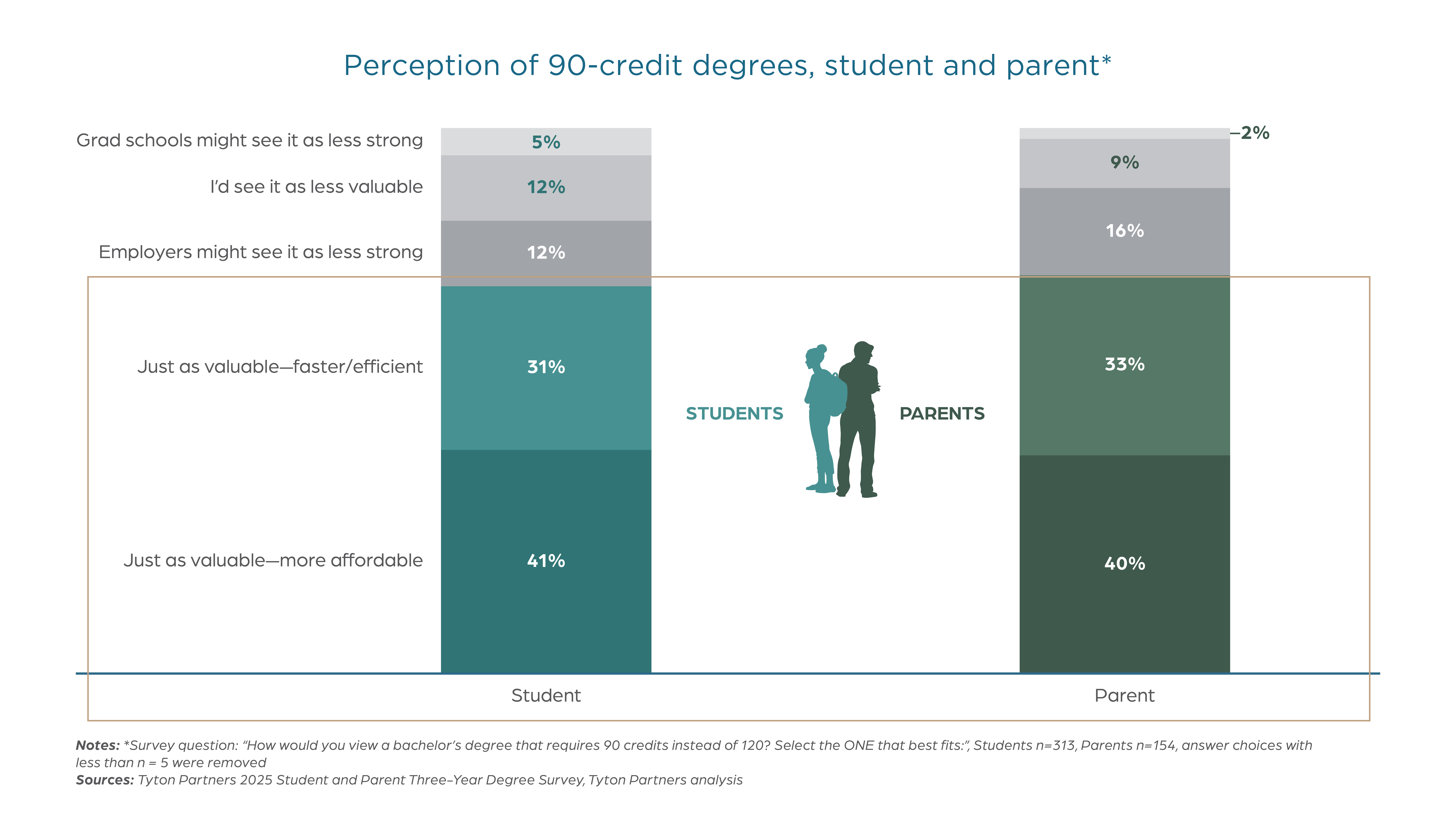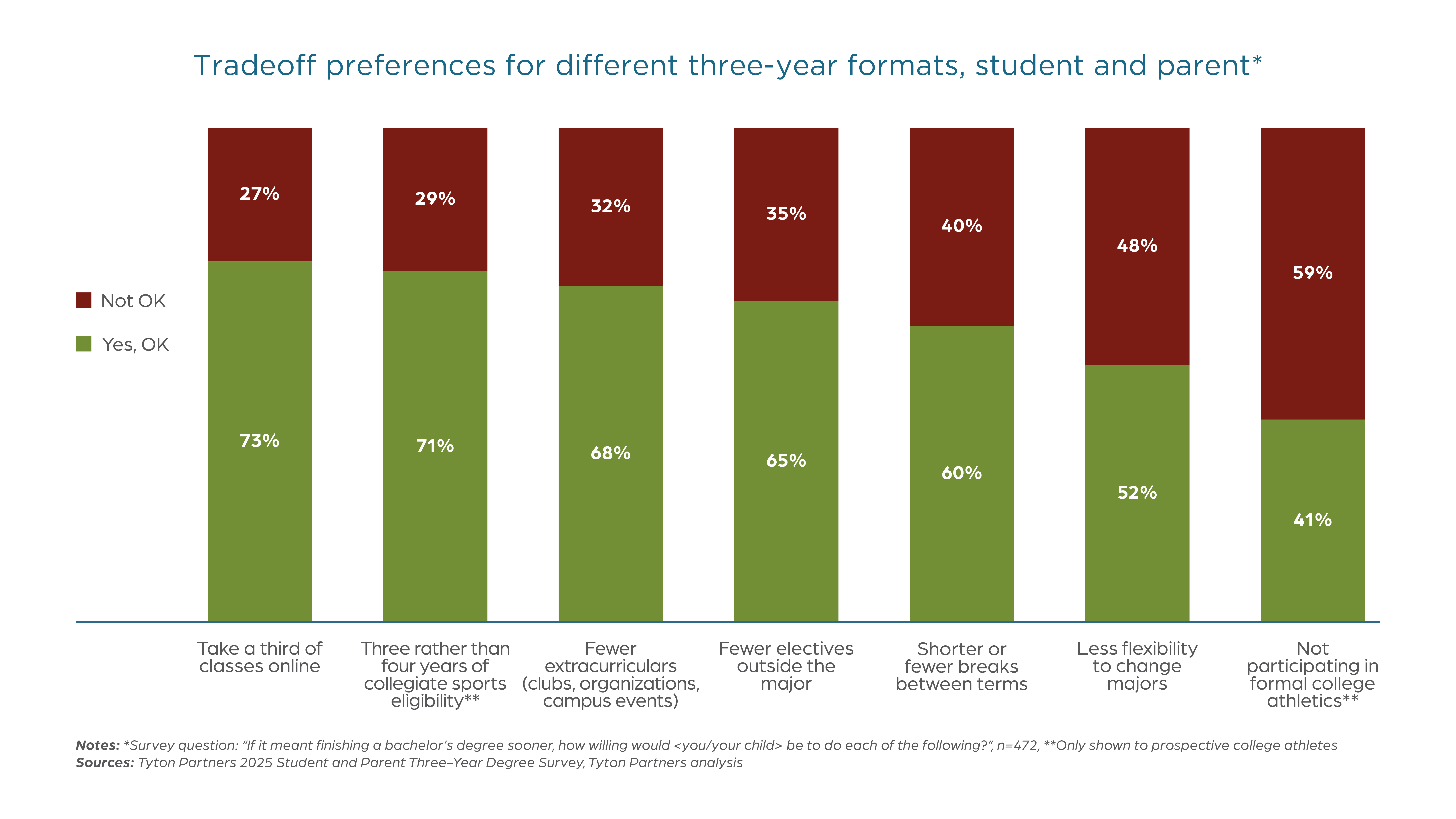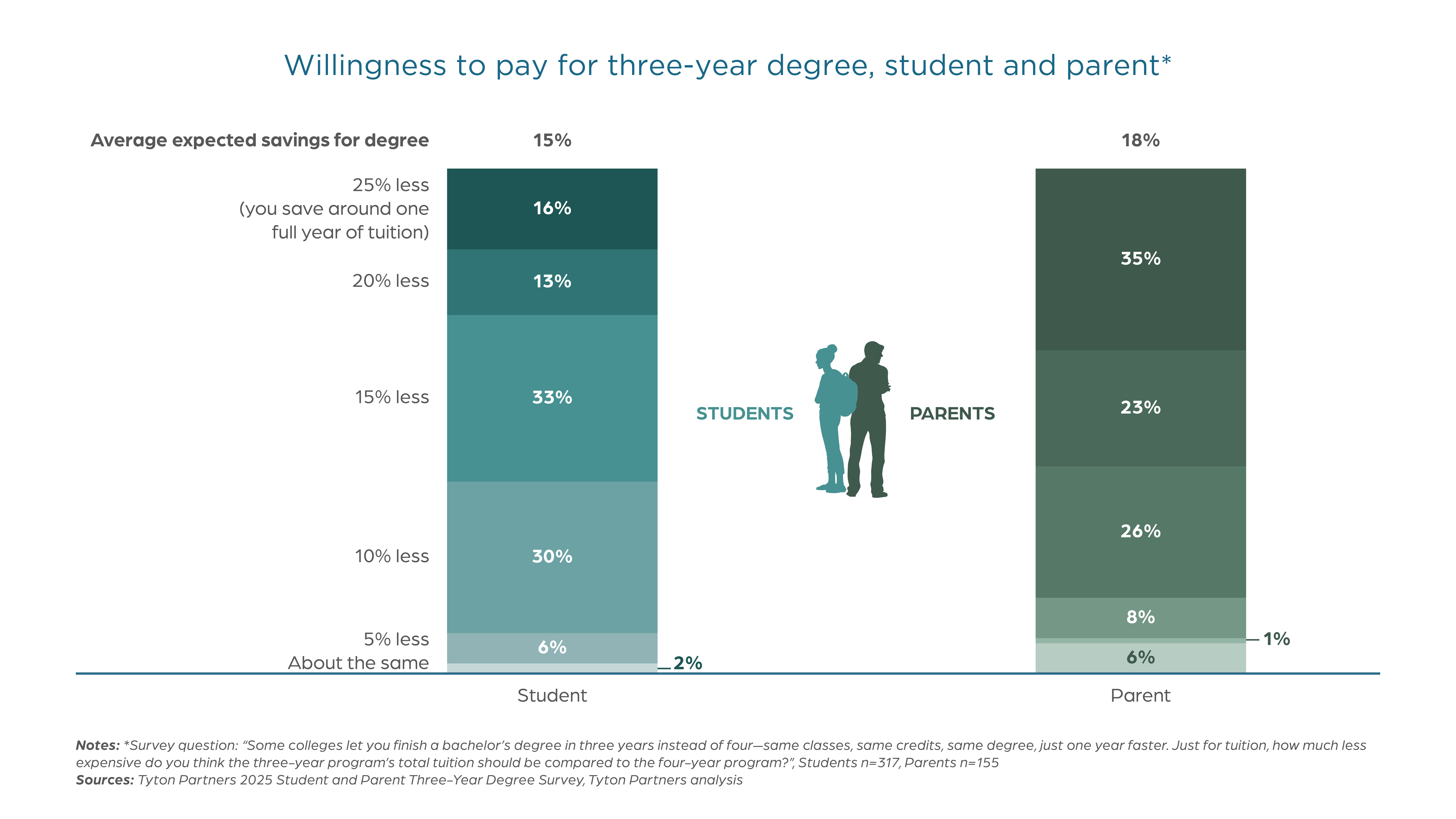Parents and students are attracted to 3-year bachelor degrees, but can institutions make the business model work?
September 23, 2025 BlogDifferentiation is going to be critical for colleges and universities to compete, and more than 60 are now…
Differentiation is going to be critical for colleges and universities to compete, and more than 60 are now pursuing 3-year bachelor degrees as one lever to stand out.1 From Johnson & Wales University to Brigham Young University, early adopters are experimenting with 90-credit programs, and 120-credit compressed versions, and hybrid/flexible pathways. Data from a recent Tyton proprietary survey2 supports these bets from the demand perspective, with both parents and students indicating strong interest.
The question for these first wave institutions – and one that we seek to answer in this article – is how to deliver a differentiated degree experience that brings in new students who prioritize speed and career ROI, and that also has healthy margins.
Our survey of almost 500 families reveals a disconnect between awareness and interest. While only 20% are aware of a 3-year degree, 3 in 4 express strong interest once the concept is introduced (73% of students, 69% of parents). Moreover, most families consider a 90-credit bachelor’s degree to be just as valuable – if not more valuable – than a 120-credit degree (72% of students, 73% of parents).

While family appetite is significant, institutions looking to launch 3-year programs must align recruiting and operating expenses with lower net tuition revenue per student. At the top of the funnel, marketing teams face the expensive dual challenge of educating prospects on what a 3-year degree is, while also selling them on their specific program. Once enrolled, they must efficiently provide academic and student support to students who potentially need extra attention compared to their 4-year peers. Maximizing enrollment by tapping into students’ core motivators and understanding what they are and are not willing to give up is key to making the math work.
The students most drawn to accelerated pathways are pragmatic and career-oriented. They are motivated by earlier entry into the workforce, reduced costs, and a streamlined curriculum.

Still, concerns remain about pacing and perception. Both students and parents worry that 3-year programs are too fast paced and stressful (38% and 42% respectively). Parents in particular worry that employers may not value a 3-year degree in the same way they value a traditional 4-year degree (19% of students vs. 42% of parents).
Institutions that can promote a clear value proposition for their 3-year degree, while proactively addressing these anxieties, will hold a competitive edge. To assuage concerns, they can emphasize robust advising and showcase how hands-on projects, internships, and competency-based learning translate to tangible, market-oriented skills.
Our psychographic survey data reveals not only that these students are career oriented, but also that they are quick to lean into challenges. They may also have had average or slightly below average academic performance in high school and may require more academic supports, especially where course schedules are accelerated.
In return for a faster time-to-career, students are willing to trade traditional elements of the campus experience such as extracurricular participation, summer breaks, and in-person classes. These tradeoffs are significant because they expand institutional flexibility in program design. With 3 in 4 students (73%) willing to take at least a third of their courses online,3 institutions can unlock efficiencies in scheduling and facility use while giving students the flexibility to learn over the summer and/or work during the semester. Still, institutions must balance the need for prescriptive course pathing with students’ interest in flexibility to change majors, and they should be wary of how a 3-year timeline may affect student athletes. 29% of prospective student athletes and their parents indicate they are unwilling to trade four years of eligibility for college athletics.

To make the tradeoffs acceptable, institutions considering a 3-year degree should address student preferences where possible. Strategies might include:
Institutions best poised to benefit from a 3-year degree will be those that can successfully position the degree as a premium differentiator – not just a “cheaper option.” And if they are able to do so, families won’t expect a full 25% discount: on average, students are willing to pay up to 85% and parents up to 82% of a 4-year degree. The revenue opportunity for three-year programs is enhanced if institutions can tap into new student populations, rather than simply cannibalizing traditional 4-year students.

It’s clear from our survey results that plainly articulating the value proposition and trade-offs of 3-year degrees will be critical to attracting students that are likely to succeed. And it’s also important for institutions to be aware of their own capacity to innovate; it’s not just students who are the pathfinders, but institutions must also fit this persona. Those with a history of experimentation, strong support infrastructure, and/or existing online/hybrid capacity that can absorb structural change will be best positioned for success. From there, cross-examining student demand, financial outlook, and design and delivery considerations will be critical to making an informed decision.
If you’d like explore how a 3-year degree might fit into your institution’s portfolio, we’d be glad to connect.